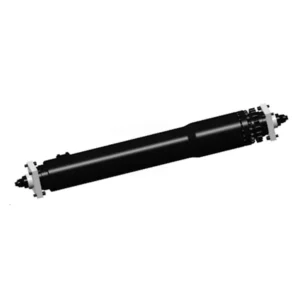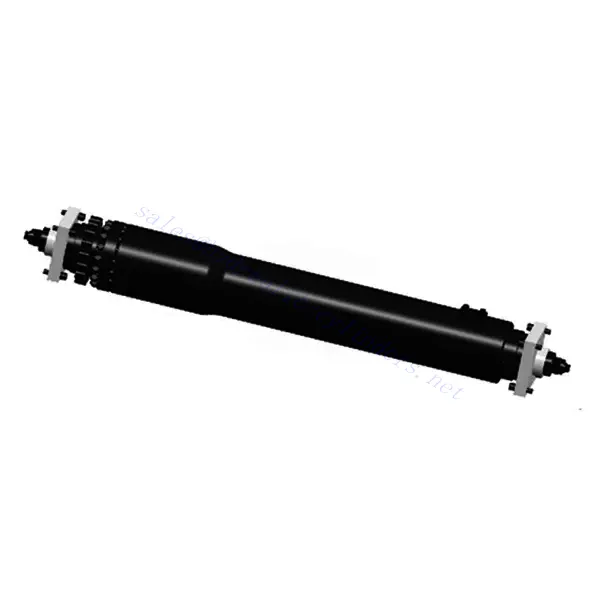Press Return Cylinder
In qualità di uno dei produttori, fornitori ed esportatori di prodotti meccanici, offriamo cilindri idraulici e molti altri prodotti.
Per maggiori dettagli, contattateci.
Posta:sales@hydraulic-cylinders.net
Produttore fornitore esportatore di cilindri idraulici.
Press Return Cylinder

The press return cylinder is a vital component in optimizing pressing operations in various industries. With its advanced features and reliable performance, this cylinder offers enhanced efficiency, accuracy, and safety.
The press return cylinder is valuable for enhancing efficiency, accuracy, and safety in pressing operations. With its robust construction, precise positioning, efficient return, and integrated safety features, this cylinder empowers you to achieve superior results. By following the recommended usage methods and maintenance practices, you can maximize your pressing operations’ performance, productivity, and lifespan. Choose the press return cylinder to streamline critical processes and elevate operational excellence.
Press Return Cylinder Key Characteristics:
- Robust Construction:
- The press return cylinder is constructed using high-quality materials, ensuring durability and longevity.
- Its robust design can withstand heavy loads and harsh operating conditions, providing reliable performance in demanding industrial environments.
- Precise Positioning:
- This cylinder offers precise positioning control, allowing for accurate alignment of the press return mechanism.
- Its exceptional accuracy ensures consistent and reliable positioning, minimizing the risk of errors or misalignments.
- Efficient Return:
- The press return cylinder enables the swift and efficient return of the press mechanism to its starting position.
- Its powerful hydraulic system facilitates rapid movement, reducing idle time and increasing overall productivity.
- Safety Features:
- This cylinder incorporates safety features such as pressure relief valves and emergency stop mechanisms.
- These safety features help protect the press and the operator, preventing accidents and minimizing the risk of damage.
Press Return Cylinder Parameter:
| Product Name | Hydraulic Press Return Cylinder |
| Features: | Provide return force for main cylinder and side cylinder, divided into plunger type/piston type |
| Bore diameter: | 180mm~410mm |
| Rod diameter: | 120mm~360mm Stroke≤4500mm |
| Thrust force: | Maximum 2612KN (Bore diameter: 410mm/pressure31.5MPa) |
| Plunger: | 140mm~360mm Stroke≤3000 mm |
| Plunger Thrust force: | Maximum 3206KN (Plunger 360mm/pressure31.5MPa) |
| Hydraulic Press Return Cylinder Applications: | Hydraulic Press |
Piston
Rod diameter: 120mm~360mm
Stroke≤4500mm
(Bore diameter: 410mm/pressure31.5MPa)
Plunger
Stroke≤3000 mm
(Plunger 360mm/pressure31.5MPa)
Press Cylinder Factory:

Usage Method Of Press Return Cylinder:
- Installation and Integration:
- Mount the press return cylinder securely onto the press frame or designated mounting area.
- Ensure proper alignment and connection, following the manufacturer’s guidelines and recommendations.
- Hydraulic Connections:
- Connect the press return cylinder to the hydraulic power unit using appropriate hydraulic hoses and fittings.
- Verify that the hydraulic connections are secure and leak-free to ensure efficient fluid transfer and safe operation.
- Positioning Adjustment:
- Adjust the positioning of the press return cylinder according to the specific requirements of your pressing application.
- Follow the manufacturer’s instructions to set the desired starting and return positions for optimal performance.
- Operational Controls:
- Familiarize yourself with the operational controls provided by the press return cylinder.
- Understand how to initiate the return movement and additional features, such as speed control or emergency stop functions.
What Law Of Hydraulics Does The Brake System Use?
The brake system in vehicles typically utilizes Pascal’s law of hydraulics. Pascal’s law states that when pressure is applied to a confined fluid, the pressure is transmitted equally in all directions. In the context of a hydraulic brake system, this principle allows for force transmission from the brake pedal to the brakes themselves.
Here is a simplified explanation of how the brake system utilizes Pascal’s law:
- Brake Pedal Application:
- When the driver presses the brake pedal, a mechanical force is applied to the master cylinder.
- Master Cylinder:
- The master cylinder contains a piston that moves in response to the force applied by the brake pedal.
- As the piston moves, it exerts pressure on the brake fluid contained within the master cylinder.
- Transmission of Pressure:
- Pascal’s law comes into play at this point.
- The pressure created by the movement of the piston is transmitted equally throughout the brake fluid in all directions.
- Hydraulic Lines:
- The brake fluid, under pressure, flows through hydraulic lines or brake pipes.
- These lines connect the master cylinder to the brake calipers or wheel cylinders at each wheel.
- Brake Calipers/Wheel Cylinders:
- The brake calipers (in disc brakes) or wheel cylinders (in drum brakes) receive the pressurized brake fluid at each wheel.
- The pressure causes the calipers or cylinders to exert force on the brake pads or shoes, which press against the brake rotors or drums.
- Friction and Braking Action:
- The friction between the brake pads and rotors (or shoes and drums) slows down or stops the vehicle’s wheels.
Capacità e capacità della fabbrica:
(1) Montaggio
We have a first-class independent research and development assembly platform. The hydraulic cylinder production workshop has four semi-automatic lifting cylinder assembly lines and one automatic tilt cylinder assembly line, with a designed annual production capacity of 1 million pieces. The special cylinder workshop is equipped with various specifications of a semi-automatic cleaning assembly system with a designed annual production capacity of 200,000 and equipped with famous CNC machining equipment, a machining center, a high-precision cylinder processing special equipment, a robot welding machine, an automatic cleaning machine, automatic cylinder assembly machine, and automatic painting production line. Existing critical equipment of more than 300 sets (sets). The optimal allocation and efficient use of equipment resources ensure the accuracy requirements of products and meet the high-quality needs of products.


(2) Lavorazione
L'officina di lavorazione è dotata di un centro di tornitura su rotaia inclinata personalizzato, di un centro di lavorazione, di una levigatrice ad alta velocità, di un robot di saldatura e di altre attrezzature correlate, in grado di gestire la lavorazione di tubi cilindrici con un diametro interno massimo di 400 mm e una lunghezza massima di 6 metri.

(3) Saldatura

(4) Verniciatura e rivestimento
Con linee automatiche di verniciatura a base d'acqua a cilindro di piccole e medie dimensioni, per realizzare il carico e lo scarico automatico con robot e la spruzzatura automatica, la capacità di progettazione è di 4000 pezzi per turno;
Disponiamo anche di una linea di produzione semiautomatica di vernici per cilindri di grandi dimensioni alimentata da una catena di potenza, con una capacità di progettazione di 60 casse per turno.


(5) Test
Disponiamo di strutture di ispezione e banchi di prova di prim'ordine per garantire che le prestazioni del cilindro siano conformi ai requisiti.

We are one of the best hydraulic cylinder manufacturers. We can offer comprehensive hydraulic cylinders. We also provide corresponding riduttori agricoli. We have exported our products to clients worldwide and earned a good reputation because of our superior product quality and after-sales service. We welcome customers at home and abroad to contact us to negotiate business, exchange information, and collaborare con noi!
Visitate la nostra fabbrica VR:
Fate un tour della nostra fabbrica VR con quanto segue
Come funziona il cilindro idraulico del carrello elevatore?
Cilindro idraulico Applicazione:


